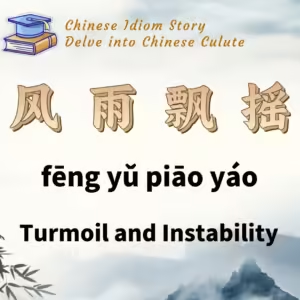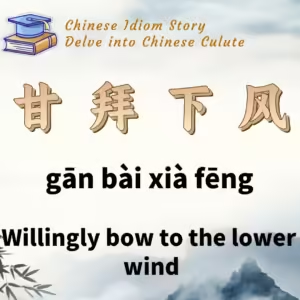
Chinese Idiom: 风雨飘摇 (Feng Yu Piao Yao)
English Translation: Turmoil and Instability
pīn yīn: fēng yǔ piāo yáo
Idiom Meaning: This idiom describes a situation that is highly unstable and chaotic, likened to a structure swaying in the wind and rain. It is often used to reflect periods of political or social instability.
Historical Source: The Book of Songs (《诗经·豳风·鸱鸮》) from the Zhou Dynasty.
Idiom Story
The idiom “风雨飘摇” originates from an ancient Chinese poem titled Chīxiāo (《鸱鸮》), part of the Book of Songs (《诗经》). This poem is set in the Western Zhou period and includes an allegorical tale of a diligent mother bird.
In the poem, a mother bird is described as working hard to prepare her nest to protect her young from impending storms. Despite her efforts to reinforce the nest with mulberry roots to guard against natural calamities, the nest remains unstable, and the bird is left anxiously worrying about the weather’s impact.
The specific lines that inspired the idiom are:
“予羽谯谯,予尾條條。予室翘翘,风雨所漂摇。”
Translation:
“My feathers are sparse, my tail is thinning. My nest is high and unstable, swaying in the wind and rain.”
These lines express the bird’s concern about the instability of her nest, which is not yet finished and is thus vulnerable to the elements. The phrase “风雨所漂摇” captures the essence of being in a precarious and unstable situation, as the nest is buffeted by the wind and rain.
Over time, “风雨飘摇” has come to symbolize any state of disorder and turmoil, especially in political contexts. It is used to describe a situation where there is great uncertainty and instability, much like a structure that is precariously held together in adverse conditions.






